How to Take Care of Children’s Teeth – The Definitive Guide
The most common question which is asked from parents is – “How to take care of my child’s teeth?”
In this article, we will talk you through the process, right from the moment teething starts, until your child gains and loses all their baby teeth, through the moment these teeth are replaced by a full set of adult teeth.
We also discuss what you, as a parent, can do to help your child throughout this period in their lives.
Most importantly, we share with you;
- How to make your child feel more comfortable at the Dentists’ office
- Exactly how and when you should be cleaning their teeth
- Consequences of a bad dental regime in their youth, and how to avoid them
- Home remedies for that nasty teething period to give your eardrums a break!
This post contains quite a lot of information, so it is quite a long read.
Refer to the Table of Contents below, as this will help you skip straight through to any section you would prefer to read.
TABLE OF CONTENTS
1. At what age should my child start going to the Dentist?
2. How do I keep my child’s teeth clean?
3. What can happen if I do not keep my child’s teeth clean?
4. What other major issues can lead my child to the Dental office?
5. Can the Dummy have any repercussions on my child’s teeth?
6. What can help with teething issues?
7. How does teething work?
8. What are the symptoms of teething?
9. Once my child has their full set of baby teeth, what issues should I be aware of?
10. Is there a difference between primary (baby) teeth and permanent (adult) teeth?
11. What can I use as a guideline for my child to receive their full set of adult teeth?
12. If my child loses a baby tooth too early, should I be worried?
13. At what age will my child’s Dentistry turn into adolescent Dentistry?
14. What does a check-up at the Dentist involve for my child?
If you would like your child to enjoy a bright, beautiful smile, please see below to find out just how much of an impact the younger years of their life will have on that smile of theirs and their adult teeth!
At What Age Should My Child Start Going to the Dentist?
As a parent, you will probably find that you are unsure of the formation of the mouth of your baby, and you find yourself wondering, “at what age should I start taking my child to the Dentist?”.
Don’t worry, you are not alone – it is another commonly asked questions that we as Dentists get from parents.
One thing you should take into account is familiarisation – so as soon as your child starts to be able to talk, rationalise, or gain a sense of understanding, start bringing them to your Dentists’ appointments with you, just as a companion.
This will help the dental surgery become a place of comfort for them, rather than something they may fear.
How Do I Keep My Child’s Teeth Clean?
It is very important that as soon as your child has teeth in their mouth, that they are getting properly cleaned.
Even if you are still breastfeeding, after doing so, simply get a piece of gauze and wipe their teeth clean.
Please do not allow your child to go to bed with a bottle of milk in their mouth, as this is one of the main causes behind what is known as “bottle caries” – a disease that causes tooth decay.
If you happen to be feeding your baby with the breast or the bottle and they fall asleep, simply get a piece of gauze, gently open their mouth and wipe their teeth clean.
Another option instead of gauze is to give your baby a little bit of water after you have fed them. What this does is clears the mouth of any milk.
Feed them as much water as they will take, as this too is good for their diet as well as their dental regime, and help them fall asleep after they have had the water.
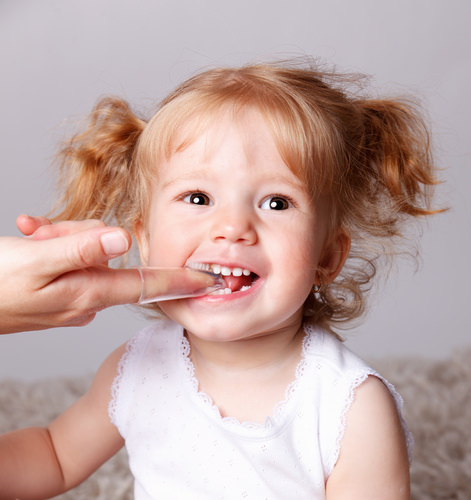
A parent cleaning their toddler’s teeth
You can introduce a soft toothbrush into their dental regime once they turn twelve months of age – or even earlier if your baby will accept it – but at this age please do not use toothpaste on the brush, only water.
From the age of eighteen months, you can begin using the toothpaste.
We still recommend that you brush your child’s teeth twice daily – both morning and night – but just be careful, as until the age of three, they may have trouble with spitting, so do not put too much toothpaste on the toothbrush. An amount no bigger than a grain of rice will do the job just fine.
Brush your child’s teeth just as you would do your own – using a gentle circular motion, and replacing the toothbrush every three to four months, or earlier if the bristles get worn or frayed.
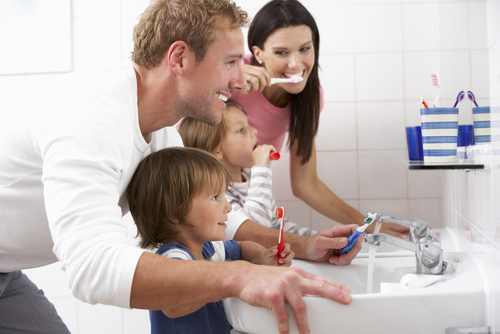
A family brushing their teeth together – Kids will learn as they watch you
After turning three, add a little more toothpaste onto the toothbrush as your child should have by now learnt how to spit – thus, switch to a pea-sized amount.
If you notice any plaque (a white film over their teeth), or red and swollen gums, these are signs that their teeth are not being brushed properly, and you need to amend the way that you are cleaning their teeth.
Until the age of six, your child will need assistance with brushing their teeth. From then onwards, they should be able to take over this role themselves.
However, you may need to keep reminding them that it is now a task that they need to do themselves every morning and every night before bed. Just keep asking them, “Have you brushed your teeth yet?”, until they get the message.
#3. What Can Happen if I Do Not Keep My Child’s Teeth Clean?
Whilst only temporary, your child’s primary teeth (also known as baby teeth) are still extremely important. Their growth will have an impact on the outcome of their smile for the rest of their lives.
One of the major roles of their baby teeth is to help make sure their adult teeth come in to place correctly.
Your child also needs healthy, strong teeth to ensure that they are able to chew their food, speak well, and have a beautiful smile.
As such, it is critical to make sure that you keep your child’s baby teeth clean, or the consequences can be far-reaching. Unwelcome repercussions include;
Bottle Caries
If your baby is put to bed with a bottle, there is far too much sugar in both breast milk and bottle milk that will stay in the mouth of your baby whilst they are asleep, as the saliva does not move around in their mouth while they are sleeping.
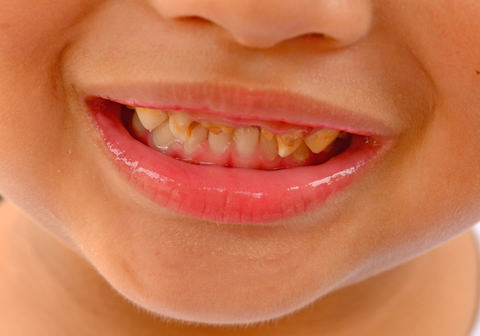
A child with dental caries also know as decay
This frequent, prolonged exposure to sugar leads to tooth decay. This is most common in the upper front teeth but may also affect other teeth in your child’s mouth.
Decay
If the decay in the tooth goes through to the nerve, it actually sends a signal to the adult tooth to erupt earlier.
This can have serious consequences, as if the adult tooth is coming up earlier and the baby tooth has an infection, it can affect the development of the adult tooth.
Infection
Cases of decay can lead to infection in the nerve of a baby tooth.
In these cases, it is highly important to get rid of that infection as soon as possible, before your child also gets fevers and become sick – the infection can take over the entire body.
What Other Major Issues Lead My Child to the Dental Office?
There are other common issues seen by Dentists’ that you still need to be careful with when it comes to your child. These include;
Honey
Please do not put any honey on your child’s gums – this is an old-fashioned home remedy for teething pain.
However, it is not safe and causes major issues with tooth decay.
Trauma
When your child is learning to walk, there is a high likelihood of them falling and hurting themselves – and falling directly on their teeth is very common.
One thing you must be very careful of is to never let them run around with something in their mouth – a pencil, a toy, anything they can pick up, please do not let them put it in their mouth and run.
It is crucial to pay attention to this because if your child falls on this object it could cause quite a lot of damage to their mouth and teeth – the end result could be a crack, fracture or even the loss of a baby tooth.
This will see you and your child at your Dentists’ office, where unfortunately not too much can be done to rectify the damage done.
If there is a crack in the baby tooth, your Dentist will ensure all the sharpness is taken away by grinding the tooth down, as any sharp bits will be very uncomfortable on your child’s tongue, also making it hard for them to eat.
However, getting your child to sit still for long enough will often be the hardest part! Whilst doing so, it is also very important not to traumatise your child and make them scared of ever returning to the Dentists’ chair.
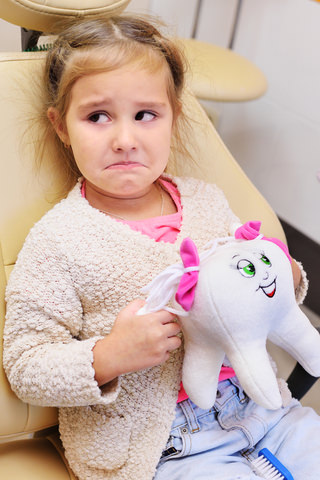
A little girl not happy in the dentist’s chair
If the crack has gone all the way into your child’s nerve, however, you are facing a major problem. You cannot leave an exposed nerve on the tooth, and if your child is too small to have the treatment done, they will have to go under general anaesthetic.
Most of the time in this scenario, the tooth is taken out to stop any infection – if the trauma has gone into the nerve of the tooth, and there is exposure to the oral cavity, something must be done about it before it results in an infection, and that something is removal of the tooth.
If the trauma to the tooth has not gone into the nerve, most of the time the tooth will heal up, so the tooth does not need to be removed – however, there is a chance that the tooth will turn black over time.
In this instance, the tooth will still stay in the body – as there has been no exposure to the oral cavity, there are no bacteria in there, and the tooth is kept as a space maintainer for as long as possible.
You must, however, keep a close eye on the tip of the root of the tooth, just to make sure no infection flares up.
So, keep a close eye on your child, and if they begin to feel sick, if they are crying, please take into consideration these symptoms could be a result of the trauma event they have had from their teeth in the past.
Can the Dummy have Any Repercussions on My Child’s Teeth?
A highly controversial topic, and one that not all Dentists’ agree on. Plus, we do not wish to take your Dummy away from your baby, just as we do not wish to take your dogs’ favourite ball away from them!
Just take into consideration that any forces in the mouth where the tongue is tied down and cannot exert any force, including finger or thumb sucking, all have some impact on the growth of the face.
This can affect the appearance of the face, possibly leading to outcomes such as crowding of the teeth, tongue-tie (when the flap of skin underneath the tongue is tied to the higher bone all the way down the front of the throat, restricting the tongue’s range of motion) and less muscle development throughout the jaw.
How Does Teething Work?
As with all growth, teething works in stages – so, just like growth spurts, you will notice it coming and going in waves.
Two or three teeth may erupt, and then you might have a break.
We will discuss the common signs and symptoms of teething later in this article, so you know how to tell when your baby is going through a teething phase.
Sometimes, however, what you will notice is though it looks like the baby teeth are breaking through the gums, and then it looks like the gums are growing over the top again.
This is totally normal – because your gums have such a rich blood supply, anything in the mouth, such as a cut, heals very quickly.
The tooth is cutting through the gum, and then when it stops growing, the gum grows back over the top again.
Then, during another growth spurt, this process repeats itself, over and over again, until the tooth has fully grown.
The entire process usually takes about two years to complete.
Although timing varies, your baby will usually begin teething by about the age of six months. Your baby’s two bottom front teeth (lower central incisors) are normally the first ones to appear. Then slowly the two top front teeth (upper central incisors) come in.
After this, you will see the side teeth, and then finally the top molars.
Usually, by the age of two to two and a half, most of the baby teeth are in their mouth. By the age of three, you should be able to count twenty baby teeth all in place.
What Can Help with Teething Issues?
Some home remedies we suggest you try to help soothe some of your baby’s pain when teething include;
- Cold – This is the best treatment. Try giving them a chilled teething ring, cold spoon or nice, clean, cold washcloth to chew on. The cold will act like a mild local anaesthetic, numbing the pain naturally.
- Bonjella – This popular teething gel is a numbing agent, that can be applied directly to the area. Just be careful not to overuse as the numbing agent will stop blood flow to the area, which stops healing in the area.
- Panadol – This painkiller, or any other over-the-shelf painkillers suitable for babies, can help reduce the pain and their crankiness too.
- Massage – Try gently massaging their gums with your finger or a moistened gauze pad. The pressure you apply can help ease some of their pain.
- Hard foods – If your baby is already able to eat solid foods, try giving them something chilled to chew on, such as a cucumber or carrot. Just keep a close eye on them whilst eating as any pieces of food that break off can become a choking hazard.
- Keep them dry – You’re going to notice an extreme amount of drool coming from your baby throughout the teething process, especially as having a teething ring, fingers, or any other objects in their mouth is going to produce excess saliva. Prevent skin irritation by cleaning and drying your baby’s chin with a clean cloth and applying a little water-based moisturiser as a barrier.
Teething can normally be handled at home with a little of these remedies and a little patience too.
However, if your baby comes down with a fever, is significantly uncomfortable, or begins to develop any other symptoms seemingly unrelated to teething, this is when you should contact your Doctor to ensure no other issues have arisen.
What are the Symptoms of Teething?
Common symptoms that your baby is teething include;
- Nappy rash and redness around the cheeks – These are both signs that your baby’s body is having inflammation as the teeth are breaking through their gums.
- Drooling – Your baby’s mouth is producing excess saliva, to try and help cool their gums. Ensure that you keep the mouth rash at bay with the cloth and moisturiser barrier we discussed underneath the home remedies earlier.
- Chewing on objects – Your baby will be trying to reduce some of the pain and tenderness of their gums by applying pressure as they chew on objects, or even by placing their fingers in their mouth.
- Crying – Teething pain, well, it hurts. It’s also a new feeling for your baby, and they are just trying to tell you something is up, and they don’t know what. Try and relieve their discomfort with some of the home remedies we discussed above.
- Irritability – Well, aren’t you a little cranky when you have a toothache? You can’t really blame them! Your baby may be more irritable than usual for hours, days, or even weeks before a tooth erupts.
- Sore or tender gums – Your baby’s gums may be very red and swollen. You might find that you have trouble with feeding them as a result, as sucking on the breast or bottle causes blood to rush to the gums. Their gums may also be too tender to handle solids.
- Waking at night – If your baby is waking at unusual times throughout the night and it isn’t a result of being sick, too hot or too cold, you can probably put the lack of sleep down to teething.
- Ear pulling – Your baby’s gums, ears and cheeks all share the same nerve pathways. If your baby is teething, you may often see them rubbing their face and tugging at their ears. Please be careful to ensure this really is the result of teething though, as they will also do this if they have an ear infection.
- Coughing and gagging – The excess of saliva in your baby’s mouth may make them cough more.
- High body temperature – You may find your baby gets a slight rise in their body temperature. However, this should never be extreme, and if your baby gets an ongoing high fever, please consult your Doctor to find out the cause.
Once My Child has their Full Set of Baby Teeth, what Issues Should I be Aware of?
One of the most common issues is decay, especially in between the teeth.
If your child will let you put the floss in their mouth, by all means, do anything that you can do to get the debris out from in between their teeth in order to prevent any plaque from building up.
From the age of two or three, the adult teeth are already beginning to form inside your child’s jawbones.
It is mandatory that a very good diet is maintained to get the state of these adult teeth in good form. Try and really minimise the sugar in their diet.

A child eating a healthy meal with her mum
Too much exposure to sugar will lead to tooth decay, as sugar will go through the body and come back as an acid in the saliva.
Thus, by giving your child refined sugar, you cannot get it out of their system by cleaning their teeth.
Different Types of Sugars
Knowing the difference between refined sugar and sugar that comes in a natural form, such as an apple or any of the sweeter fruits, will really make a big difference to your child’s diet and their smile.
When you have natural sugars, you have the enzymes that come with it for your child to be able to digest it.
Whereas when it comes to refined sugars, there is nothing to help your child’s body digest it, so it actually leaches out of their tissues in order to clean the sugar up and burns with a pollution effect on the body – meaning it is taking their bodies one, two or even three days after having the sugar for them to get rid of it.
Once their body gets used to having so much sugar, it can also become highly addictive.
It is best to get your child used to natural sugars and give them “tooth-friendly” foods – a great substitute is yoghurt with no sugar, sweetening it by adding in your own natural sweet fruits such as raspberries.
This is much healthier for their body, mouth, and teeth, and will still leave them with a happy smile!
It is highly important that the baby teeth stay in a healthy condition – many people think that the baby teeth will simply fall out and be replaced by the adult teeth, which will solve any pre-existing conditions.
This may not be the case – your child’s baby teeth are setting a foundation for their adult teeth.
Although not proven through studies, many Dentists’ have observed over the years that an unhealthier foundation may cause your child to have more dental problems later in life.
Don’t just rely on good genetics – set up a good base for your child, with a healthy diet full of nutrition, hydration, and fresh air, and you are setting them up for a happier, healthier smile that may have less need for dental fillings to replace gaps that could be left by an unhealthy diet containing too much sugar.
Is there a Difference Between Primary (baby) Teeth and Permanent (adult) Teeth?
Yes, there is a huge difference between your child’s baby teeth and any adult teeth.
The main difference being, just like baby bones, baby teeth are also much softer than those that are fully developed. Baby teeth are actually coated with a different type of enamel than adult teeth, and it’s just not as hard.
Baby teeth are also sometimes called “milk teeth”, for the simple reason that it does not take much to decay them. Thus, the effect of sugar is much stronger on baby teeth than it is on adult teeth.
The pure refined sugar affects your child’s teeth, it affects your child’s behaviour, it affects your child’s sleep, and it affects your child’s concentration level – all in all, it sounds like something best to be avoided wherever possible!
Try subsisting foods full of sugar for more “tooth-friendly” foods, such as sugar-free yoghurt, cheese, nuts, fruits and vegetables.
The shape of all the baby teeth are also very different than the shape of the adult teeth.
This is because their main purpose is to act as a space maintainer – this means that the permanent, or adult teeth, will use them as a guide when they come through and erupt into that space.
When an adult tooth is erupting, what it is actually doing is resorbing, or eating the baby tooth in front of it.
So, the adult tooth comes through underneath the root of the baby tooth, and by doing so it knows exactly where it needs to come into place and grow. From the age of three onwards, the baby tooth starts to lose its root – hence why this tooth falls out, so another can grow in its place.
What can I use as a Guideline for My Child to Receive their Full Set of Adult Teeth?
You might notice your child start to lose their first baby tooth around the time they start kindergarten – generally the age of five or six.
This entire process takes a few years and is usually finished by the time they have reached high school, where they should have their full set of adult teeth – this is anywhere from the age of eleven to thirteen.
If your child happens to be a few years off these ages, do not be alarmed, this is only a general guideline – some children do tend to get their adult teeth much earlier, and some much later.
If your child does have any serious oral problems, your Dentist will discuss it with you in their regular check-ups.
If My Child Loses a Baby Tooth Too Early, Should I be Worried?
If your child loses a baby tooth too early from trauma, decay, or some other form of dental disaster, you may be worried this will create an issue as the adult tooth does not have a guideline to follow when erupting into the mouth – and you may be right.
If a baby tooth is lost too early – generally before natural tooth loss begins at the age of six – it can cause problems with tooth crowding, as well as have serious repercussions on the development of their jawbone and muscle.
This can lead to problems occurring in adolescent Dentistry, which will require your child to have their bite and alignment attended to.
No need to worry though – if your child loses a tooth too early, please book an appointment with your Dentist.
There are plenty of options they can use to prevent further issues later on in your child’s life.
The most common being, spacers or space maintainers can be placed in the gap of the missing tooth, doing the job of the baby tooth by preparing the adult tooth for its’ arrival.
At What Age Will My Child’s Dentistry Turn into Adolescent Dentistry?
Once your child starts going through puberty and has a full set of adult teeth, they will be put into adolescent Dentistry.
This is at roughly around anywhere from the ages of eleven to thirteen, when all of their permanent teeth will be in place.
They have usually received their teeth in the following general order;
- The first set of teeth to come in are the lower anteriors, and following this, they receive their six-year-old molars.
- Then comes their laterals (the side teeth, both top and bottom), and then they will start to get their first baby molar.
- Next comes their pre-molars, and then the conine, which completes the arch.
- Then they get their twelve-year-old molars, which gives them a full set of twenty-eight teeth. Once this process is completed, they are placed into adolescent Dentistry.
They will get their wisdom teeth much later date, at the age of seventeen or beyond.
What Does a Check-up at the Dentist Involve for My Child?
Once your child has reached the age of six, they should be going for regular dental check-ups at least once a year.
A general procedure is quite straightforward, and by this age, they should already be used to joining you and be comfortable at the Dentists’ office. Their check-up will involve;
- Your Dentist ensuring all your child’s teeth are in the correct position
- Your Dentist giving your child’s teeth a good scale and clean, removing any build-up of tartar and plaque
- If necessary, your Dentist teaching your child how to take better care of their teeth by showing them the correct way to brush, floss and rinse
Your Dentist will then give you the information regarding your child’s oral health, advising you if more frequent visits or preventative measures are necessary.
Conclusion
From the age of six months, until they reach puberty and gain a full set of adult teeth, it is highly important that your child’s baby teeth stay in a healthy condition.
The baby teeth are setting a foundation for their adult teeth, giving them a guideline to follow while erupting into the mouth.
An unhealthy foundation may cause your child to have more dental problems later in life.
You can help your child set up a good foundation for a beautiful smile with a healthy diet full of nutrition, hydration, and fresh air – and it never hurts to give a bonus treat to all those children who stay away from an unnecessarily unhealthy diet containing too much sugar with an extra special first visit from the Tooth Fairy!
If you have any questions relating to Children’s Dentistry, just leave a comment!
By Dr. V
Created at June 05, 2019, Updated at January 25, 2025
Sorry, the comment form is closed at this time.


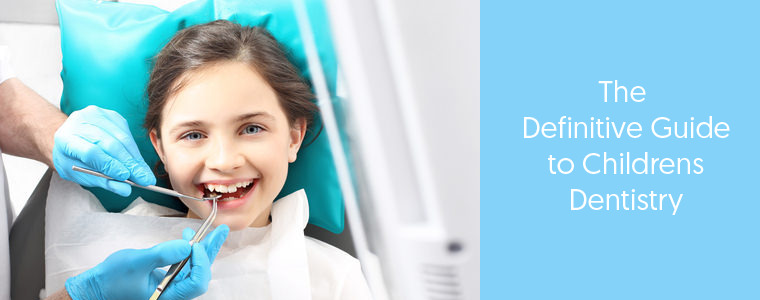
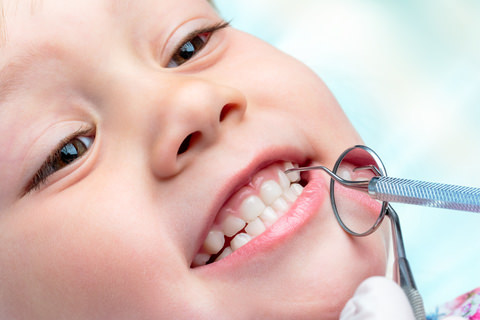
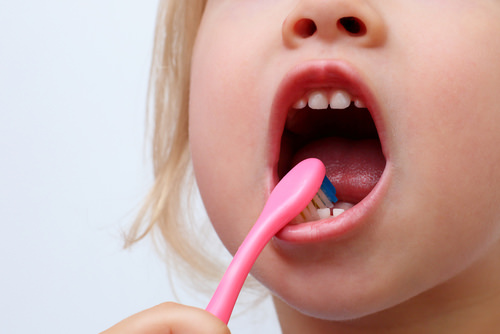
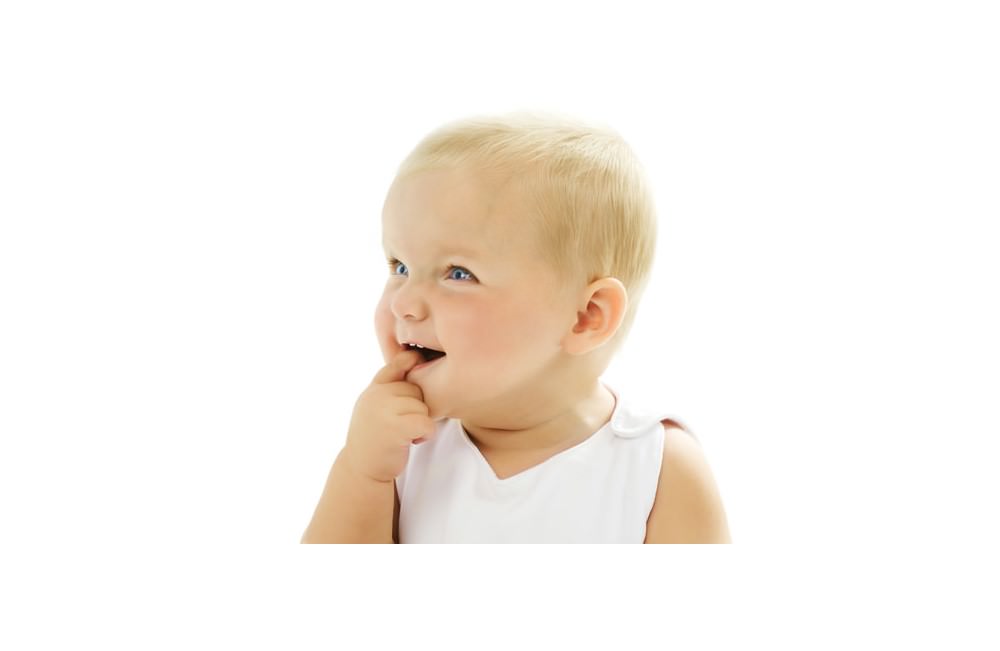
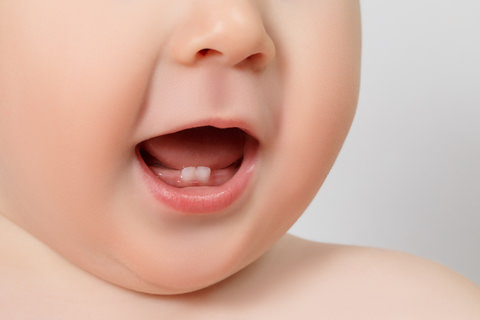
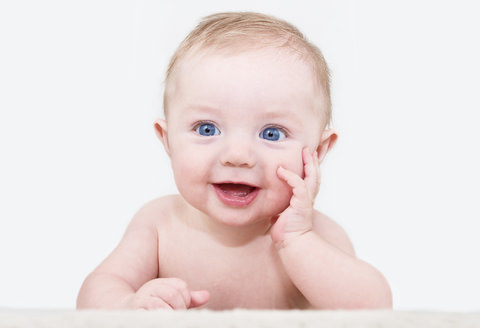
James Franklin2 years ago
Your kid’s dental blog is my go-to source for all things related to pediatric dentistry. Your posts are not only informative but also entertaining, making learning about dental care a fun and enjoyable experience.